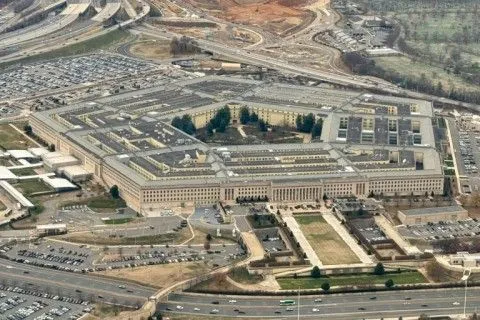Donald Trump’s Bold Rebrand
The announcement that Donald Trump renames Department of Defense came directly from the White House. Officials stated that the president believes the name “Department of War” carries historical weight and sends a clearer message about America’s military readiness. The Department of Defense, originally renamed in 1949, had symbolized a more modern and strategic posture, but Trump’s move revives terminology that harks back to the nation’s earlier eras.
Historical Context of the Department of Defense
The Department of Defense (DoD) was established to unify military command and strategy under a single entity. Before that, the U.S. operated under the Department of War, a name that had existed since 1789. When Donald Trump renames Department of Defense, he effectively reverses that 20th-century modernization. For Trump, the shift is not only a symbolic rebranding but also a statement of power and determination.
From War Department to Defense Department
In 1947, the National Security Act set the groundwork for merging military branches, and by 1949, the Department of War became the Department of Defense. The goal was to emphasize defense rather than aggression. By choosing to rename it back, Trump challenges that narrative, suggesting that calling it the Department of War eliminates ambiguity about America’s global posture.
The White House Announcement
The White House announcement emphasized that this rebrand reflects transparency. According to officials, Trump wanted to ensure that citizens and foreign powers alike understood that America stands ready to confront adversaries. Critics, however, argue that the move risks escalating tensions abroad by projecting an overly aggressive stance.
Reactions to the Rebrand
The news that Donald Trump renames Department of Defense to Department of War sparked immediate reactions:
- Supporters praised the decision as strong leadership, arguing that the name “Department of War” more honestly represents the role of the U.S. military.
- Critics accused Trump of warmongering, saying the change undermines decades of diplomacy aimed at balancing power with responsibility.
Political analysts note that Trump’s base often responds positively to bold, symbolic actions that emphasize strength, while opponents view the move as reckless branding.
Implications for U.S. Foreign Policy
By renaming the Department of Defense, Trump sends a signal to allies and rivals alike. Allies may perceive the move as a reaffirmation of military commitment, while adversaries could see it as a provocation. International observers are divided: some believe the clarity of “Department of War” is refreshing, while others fear it could embolden conflict.
Domestic Policy and Military Culture
The rebrand may also affect military culture internally. Veterans and active-duty service members are debating whether the change honors tradition or oversimplifies the mission. For decades, the Department of Defense has emphasized readiness, peacekeeping, and humanitarian assistance alongside combat. Returning to “Department of War” may redefine priorities.
Media and Public Perception
Major media outlets quickly reported on the White House announcement. Headlines across the U.S. and beyond highlighted how Donald Trump renames Department of Defense, sparking both applause and criticism. Social media platforms saw trending debates, with hashtags like #DepartmentOfWar and #TrumpDefenseRebrand gaining traction.
Public opinion remains divided:
- Some citizens feel that Trump is restoring honesty by calling war what it is.
- Others worry that the aggressive language fuels unnecessary fear and polarization.
Conclusion
Donald Trump renames Department of Defense to Department of War in a decision that reflects both political symbolism and ideological conviction. The White House announcement stressed strength and transparency, while critics warned of potential diplomatic fallout. Whether viewed as a bold restoration of historical tradition or a risky rebrand with global consequences, this move has already cemented its place as one of the most controversial actions of Trump’s presidency.
Here are five reputable mainstream U.S. media sources:
-
The Financial Times — “Donald Trump to rebrand defence department as the Department of War.”
A detailed look at the executive order allowing “Department of War” as a secondary title and plans for a formal renaming.Financial Times -
The Daily Beast — “Trump Rebrands Pentagon as ‘Department of War’ While Troops Fight Litter Problem.”
Explores the symbolic renaming alongside reporting on National Guard duties in D.C.The Daily Beast -
People Magazine — “Pete Hegseth Will Soon Be Called the ‘Secretary of War’ as Trump Prepares to Rebrand Department of Defense: Reports.”
Focuses on the title changes for officials like Pete Hegseth and insights into how the rebranding is being implemented.People.com -
Reuters (via mainstream wire) — “Trump to rename Department of Defense the ‘Department of War,’ official says.”
A factual account emphasizing the executive order’s scope, legislative requirements, and political implications.Reuters -
Associated Press (AP News) — “Trump seeks to rebrand the Department of Defense as the Department of War.”
Coverage on how the administration plans to use “secondary titles” and the legal hurdles involved.apnews.com








